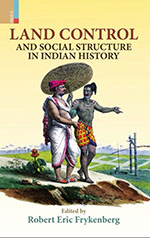The two edited volumes under review comprise a collection of twenty-four essays incorporating an understanding of land in South Asia, exploring the purview beyond disciplinary boundaries. They historically map out South Asia’s land distribution and the negotiations involved in it among various actors on those lands. In Land Control and Social Structure in Indian History, among the eleven essays, those by S Nurul Hasan, Tapan Raychaudhuri, Burton Stein, and Nilmani Mukherjee start with a precolonial understanding of the land and extend to their modern-day implications. Burton Stein’s essay very ambitiously attempts a longue durée approach from the 9th to the 19th centuries’ understanding of the agrarian system in South India.
One of the central arguments of the volumes that also resonates actively in Raychaudhuri’s and Metcalf’s essays is that despite government and land regulation changes, possession of land has remained consolidated in the hands of the few landholding communities. Their arguments indicate that the upper tier of the landholding communities learnt to adapt to changes and stay in control over their land. This continuity in the status quo can be attributed to the assumption that changes in land regulations introduced new actors into the hierarchy but did not attempt an operational disruption to the existing structure.

